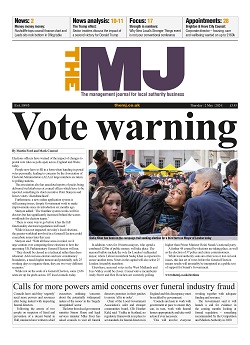With waitlists for elective treatment ticking up to 7.5 million, A&E departments still in crisis, and patients struggling to get an appointment with their GP, it is easy to lose sight of the slow burning crisis facing young people’s mental health. But that doesn’t make it any less of a ticking time bomb. It is estimated that one in six children aged seven to 16 has a probable mental health disorder, a number which rises to almost one in four among 17-24-year-olds.
Last year, a record 1.2 million young people were referred to child and adolescent mental health services (CAMHS), and even then it is estimated that only half of all young people who would benefit from support are able to access it.
Clearly, part of the solution to our current crisis requires doubling down on commitments to boost capacity in CAMHS.
The NHS’s long-term workforce plan has pledged to increase training places for clinical psychology and child and adolescent psychotherapy in the coming decade; school-based mental health support teams, which provide therapy for mild-to-moderate mental health conditions continue to be rolled out across the country; and funding for young people’s mental health services has grown year-on-year since 2017. While these are welcome steps, they will be insufficient to meet a tidal wave of demand.
Rather than trying to play catch-up in CAMHS, we need to get ahead of the curve, preventing the emergence of mental ill health wherever possible and intervening early to meet needs where necessary.
Fortunately, there are a range of innovative local areas leading the way in doing exactly that.
In 2019, Southwark LBC became the first local authority in England to pledge to provide mental health support to all young people who need it. Working in partnership with Groundworks, a charity, and children and young people from local youth clubs and schools, the council designed a new approach to young people’s mental health. At the heart of Southwark’s offer is an open-access, drop-in service called The Nest.
Through The Nest, young people facing mental health challenges can access support without a referral, in an environment which feels more comfortable than the school counsellor’s office or the GP surgery.
If more serious needs are identified, referrals can be made to specialist support in the NHS, but most issues can be managed by community mental health workers.
On the other side of London, Newham has taken its own unique approach to young people’s mental health. Young people often report falling between the cracks of disjointed services and not knowing where to turn for help. In response, Newham set up a multi-agency panel collective (MAC) which brings together the voluntary and community sector (VCSE), NHS and local authority partners to co-ordinate support.
The importance of developing a social, rather than a purely medical response to mental health is core to Sheffield’s approach, too. The city council and local NHS commissioners jointly fund Door 43, an innovative youth information advice and counselling service. Recognising that poor mental health is often driven by other social and economic difficulties facing young people, the charity provides mental health counselling alongside other services such as employment support, housing advice, and sexual health services.
A weekly wellbeing café allows young people to talk about their wellbeing while making art, listening to music and socialising. A social prescribing service, led by community link workers, gives young people a chance to develop a personalised mental health plan, centred on taking part in activities which reduce isolation and promote independence.
Rather than waiting for CAMHS capacity to come online, local areas are already developing creative solutions to boost young people’s mental health. Only by learning from them can we finally get on top of a growing crisis.
Seb Rees is senior researcher for independent public services think-tank Reform
@reformthinktank



